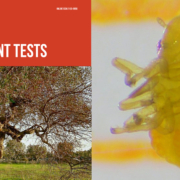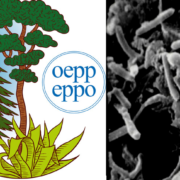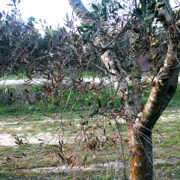Transcriptome analysis of two olive cultivars in response to Xylella fastidiosa infection
Authors: A. Giampetruzzi, M. Morelli, M. Saponari, G. Loconsole, M. Chiumenti, D. Boscia, V.N. Savino, G.P. Martelli, P. Saldarelli
Type of contribution: Conference Abstract | Oral Presentation
Conference: 22th Congress of the Italian Society of Plant Pathology, 19-22 September 2016, Roma (Italy)
Keywords: Xylella, Transcriptome, Leccino, Ogliarola
Corresponding author: P. Saldarelli (CNR-IPSP)
Abstract
The CoDiRO strain of Xylella fastidiosa subsp. pauca (Xfp) is ravaging olive (Olea europaea) groves in southern Italy, causing a destructive disease denoted Olive Quick Decline Syndrome (OQDS). Field observations show that the Xfp-infected plants of the cv. Ogliarola salentina develop more severe symptoms than that of cv. Leccino. A global transcriptome profiling comparing the two olive cultivars, infected or not by Xfp, was performed to ascertain whether a tolerant condition of cv. Leccino exists, which could be exploited for lessening the economic impact of the disease on the local olive industry. The study revealed that 659 and 447 genes were differentially regulated upon Xfp infection, in cvs Leccino and Ogliarola salentina, respectively, whereas 512 genes resulted altered between the two infected cultivars. The analysis showed that plants of both cultivars perceive the presence of Xfp, mainly involving cell wall-associated proteins. The predominant response of cv. Leccino, which is missing in cv. Ogliarola salentina, consists on the up-regulation of genes encoding receptor-like kinases and receptor-like proteins. This different transcriptome response determines a lower pathogen concentration in the cv. Leccino, suggesting that it may harbor genetic constituents and/or regulatory elements which counteract Xfp infection. These findings suggest that cv. Leccino is endowed with an intrinsic tolerance to Xfp, which makes it eligible for further studies aimed at investigating molecular pathways underlying its different defense response.








